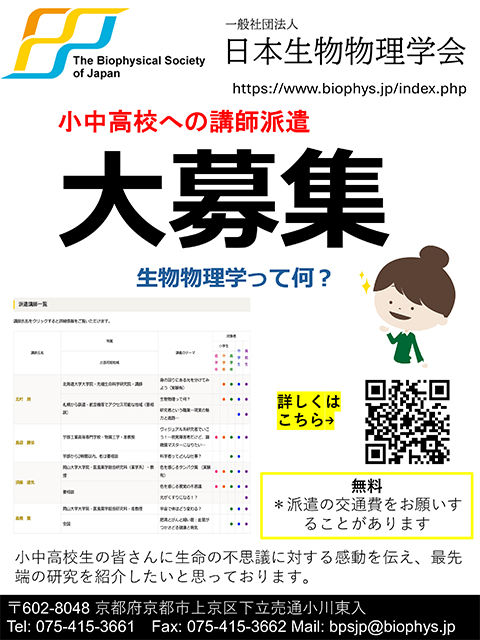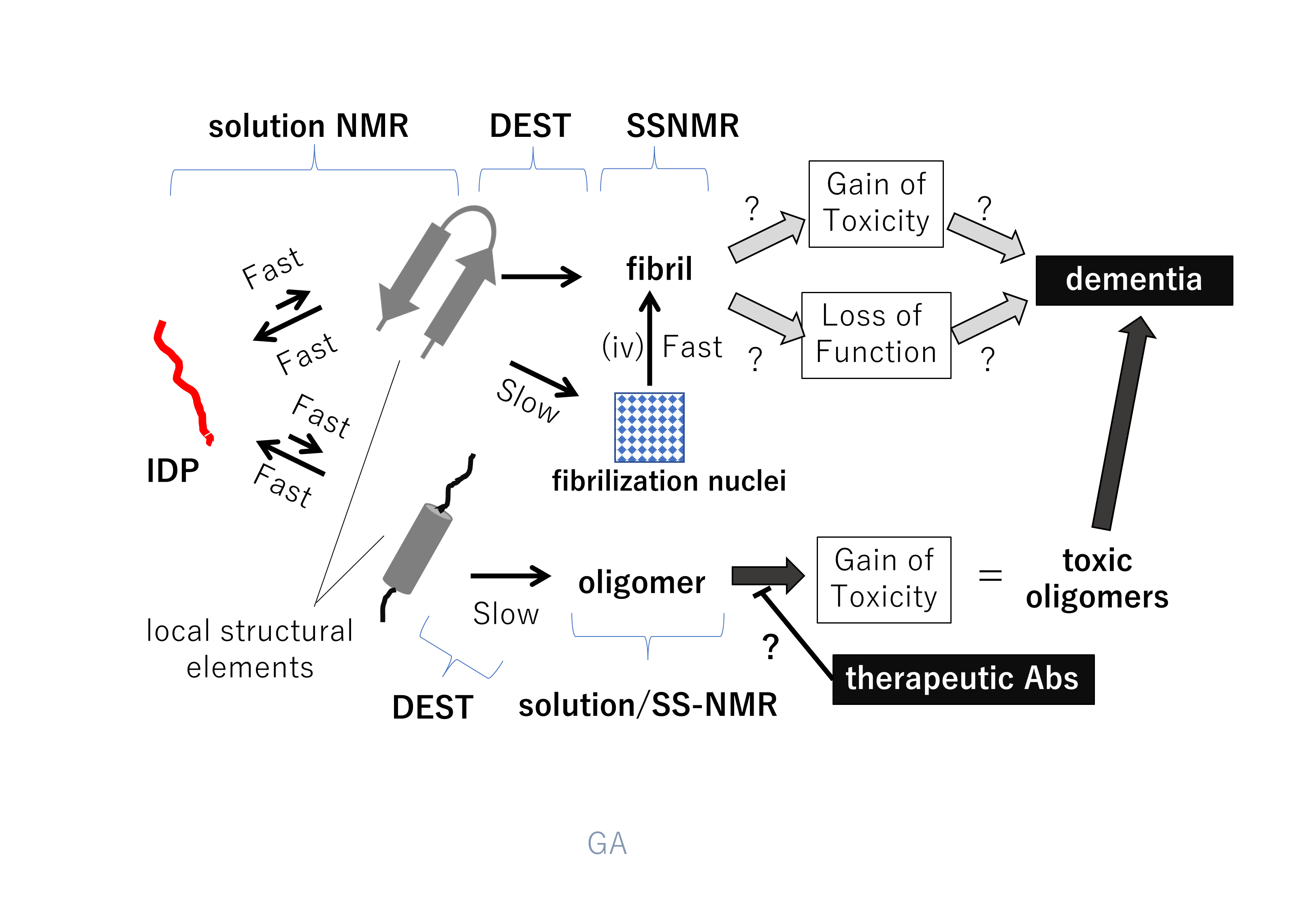男女共同参画学協会連絡会
支援企業による広告記事
- ソーラボジャパン株式会社
- CAD を使って光学装置を設計してみよう
- 「生物物理」2025年10月号
- ソーラボジャパン株式会社
- 次世代2光子顕微鏡―小型化がもたらす新たな可能性
- 「生物物理」2024年10月号
- ソーラボジャパン株式会社
- サイエンティフィックカメラと周辺機器の同期
- 「生物物理」2023年10月号
- ソーラボジャパン株式会社
- 顕微鏡のリノベーション ~ 顕微鏡ポートを活用した光学系の導入
- 「生物物理」2022年12月号
「Biophysics and Physicobiology」に Hidekazu Hiroaki による "Molecular mechanisms of amyloid-β peptide fibril and oligomer formation: NMR-based challenges" をJ-STAGEの早期公開版として掲載
2023年02月03日 学会誌
日本生物物理学会欧文誌[Biophysics and Physicobiology]に以下の論文が早期公開されました。
Hidekazu Hiroaki
"Molecular mechanisms of amyloid-β peptide fibril and oligomer formation: NMR-based challenges"
URL:https://doi.org/10.2142/biophysico.bppb-v20.0007
- Abstract
- To completely treat and ultimately prevent dementia, it is essential to elucidate its pathogenic mechanisms in detail. There are two major hypotheses for the pathogenesis of Alzheimer’s dementia: the β-amyloid (Aβ) hypothesis and the tau hypothesis. The modified amyloid hypothesis, which proposes that toxic oligomers rather than amyloid fibrils are the essential cause, has recently emerged. Aβ peptides [Aβ(1–40) and Aβ(1–42)] form highly insoluble aggregates in vivo and in vitro. These Aβ aggregates contain many polymorphisms, whereas Aβ peptides are intrinsically disordered in physiological aqueous solutions without any compact conformers. Over the last three decades, solid-state nuclear magnetic resonance (NMR) has greatly contributed to elucidating the structure of each polymorph, while solution NMR has revealed the dynamic nature of the transient conformations of the monomer. Moreover, several methods to investigate the aggregation process based on the observation of magnetization saturation transfer have also been developed. The complementary use of NMR methods with cryo-electron microscopy, which has rapidly matured, is expected to clarify the relationship between the amyloid and molecular pathology of Alzheimer’s dementia in the near future. This review article is an extended version of the Japanese article, Insights into the Mechanisms of Oligomerization/Fibrilization of Amyloid β Peptide from Nuclear Magnetic Resonance, published in SEIBUTSU BUTSURI Vol. 62, p.39-42 (2022).
URL: https://doi.org/10.2142/biophysico.bppb-v20.0007







